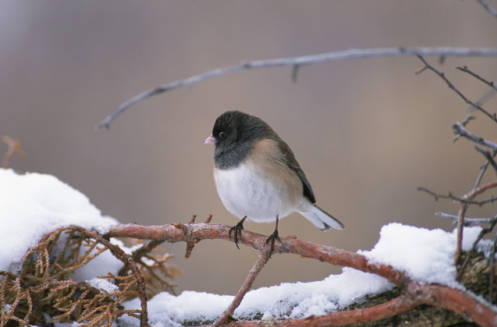It used to be that more than a century ago in Massachusetts, one bird heralded the arrival of winter more than any other. The locals called it the Snow-Bird. We call it the Dark-eyed Junco.
The Snow-bird “comes to us just in advance of the wintry desolation,” wrote William Bourn Oliver Peabody in 1839, “an infallible sign that the dreary season is at hand; dreary to us, it would be proper to say; for this little traveller, though it retreats before it, evidently has no fear of its cold and snow.”
They saw it as an invasion solely from the north, a hardy little species blasting out of the colder climes to spend the winter in ours. “It is almost always seen here in company with the tree-sparrows. After doing all they can to pick up a subsistence from the frozen ground, they come round our houses to gather crumbs, or any morsels of provision that may have been cast out from the door; and if a handful of meal is thrown to them, they receive it with great delight.”
But in 1839, ornithology was in its infancy, and Massachusetts was barely a teenager. At that time, our state consisted of 290 towns (today 351), and held nine times fewer people. Western Massachusetts was unexplored in parts, especially the tops of the Green and Taconic mountains. So, when Peabody stated, “They are only summer residents in the fur countries, and never abound there. Wilson tells us that they sometimes breed in the Alleghany mountains,” he was onto something, even if he didn’t know it. We know now, thanks to the intrepidness of Massachusetts birders who established the fact long ago, that Dark-eyed Juncos breed at Massachusetts higher elevations. They’re here all year long, but for those of us in the eastern half of the state, they may as well be the Snow-Bird of yore.
